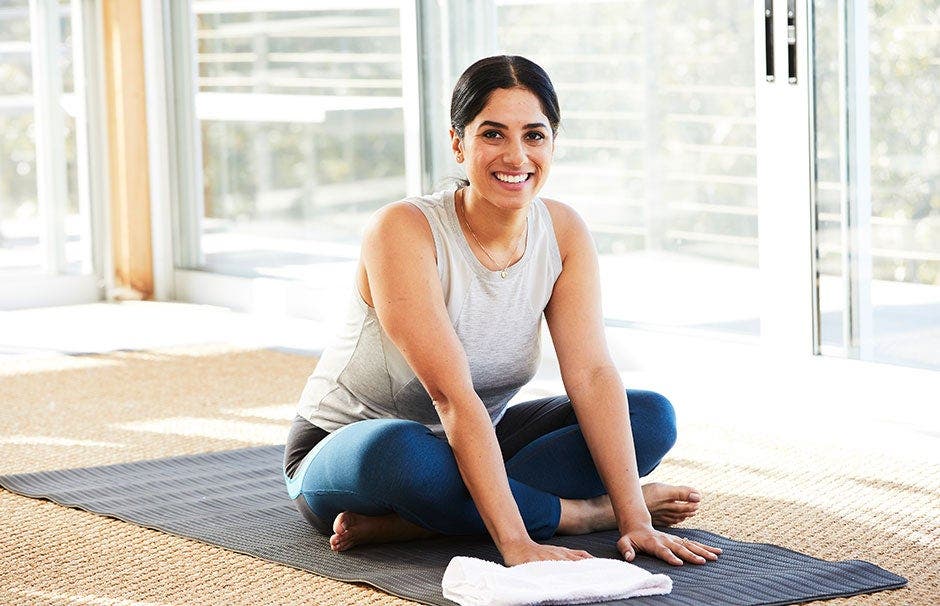Beginner's guide to starting exercise


Getting started with exercise
1. Find motivation
Exercise is one of those things – like cleaning the oven – that’s easy to put off until tomorrow. But with the right approach, it’s simple to become one of those fit and healthy people you’ve always dreamt of being. The most important thing you need to start? Motivation. “You have to want to exercise for yourself, whether it’s to reduce your health-risk factors, see your grandchildren grow up, reverse the signs of pre-diabetes or prevent osteoporosis,” says accredited exercise physiologist Luke Michael. In other words, you need to find a good reason – or several – why you want to get fit. Once you have yours, here’s everything else you need to get your new active lifestyle off to a flying start.
2. Set goals
Be realistic with your goals when you’re getting started and don’t beat yourself up. “Thinking ‘I’ll start tomorrow’ happens to everyone, but it happens more to some people because they think exercise is too difficult for them,” says Michael. “Overcome this by making your goals easier to achieve.” If you haven’t exercised for a while, start by going for a walk first. To make goal-setting work for you, there are a few golden rules. “Make your goals specific and measurable,” he says. For example, make a commitment to walk three to four times a week for 20 minutes. “Focus on one goal, then move to the next,” he adds.
3. Take it slow
A big mistake new exercisers make is to go at it like a bull at a gate. “It has to be done slowly – and the older and heavier you are, the more gradual exercise has to be,” says Dr Belinda Beck, professor in exercise physiology at Griffi th University. This is vital to side-step injuries. “If someone who hasn’t exercised all their life suddenly starts, they’ll fi re up knees that have been slowly deteriorating. But if you’re gentle, you’ll improve the health of those joints slowly,” says Dr Beck. That means building up gently. “If your favourite walk takes you 20 minutes now, next time try walking faster to beat that time,” suggests Michael. But let your body guide you. “Slightly sore muscles are OK, but if you’re hobbling in pain, that’s too much,” says Michael.
4. Eliminate obstacles
Try as we might, being busy tends to get in the way of good intentions. “Make sure you have the fewest amount of obstacles to exercise,” says Dr Beck. “That might mean making a specific time of day to exercise when there’s no interruptions, or scoping out the work showers where you know you can get ready.” As for what to wear, don’t get sucked into thinking you need lots of fancy gear. “As far as I’m concerned you can wear a muu-muu – it doesn’t matter as long as it’s comfy,” says Dr Beck. A good sports bra is a must, though. Research by the Australian Institute of Sport and Berlei shows that a size 16DD bust bounces up to 19cm during exercise. Head to your local department store to get measured.
5. Use expert help
Don’t fear gyms – they’re full of great equipment that would cost a bomb to get at home, and you can have an exercise routine tailored to your needs. Lifting weights, for example, is a great way for women to improve bone health. “Your muscles become lovely and strong,” says Dr Beck. But for your training to work, you need to develop a good technique. “You don’t want to be swinging weights in a funny position, and even exercises such as squats can worsen a bad knee,” explains Dr Beck. “So it’s worth getting supervision to check your positioning.” Before you dive into a gym membership, take advantage of a one-week trial to see if it’s right for you and to see if you like it. “Even if you don’t want to work out in a gym permanently, it’s worth going once or twice to get trained in the right technique,” says Dr Beck. “Then you can do it at home with a couple of cans of baked beans.”
6. Mix it up
Once you’ve worked up a base fitness level, mix things up to keep exercise interesting. If you’ve joined a gym, try different classes, or start including more hills or steps in your run. And you don’t need to spend hours on the cross trainer to see results. “For most people, 30 minutes of good, high-intensity exercise about three to four times a week will do the job,” says Dr Beck. New research found that inactive people who did three 30-minute sessions of sprint interval training (SIT) a week saw the same health improvements as people who did five hours of regular endurance exercise a week. SIT involves four to six 30-second ‘all-out’ sprints on a bike or treadmill mixed with four minutes of low-intensity exercise. “Just check with your doctor that high-intensity exercise is OK,” says Michael.
